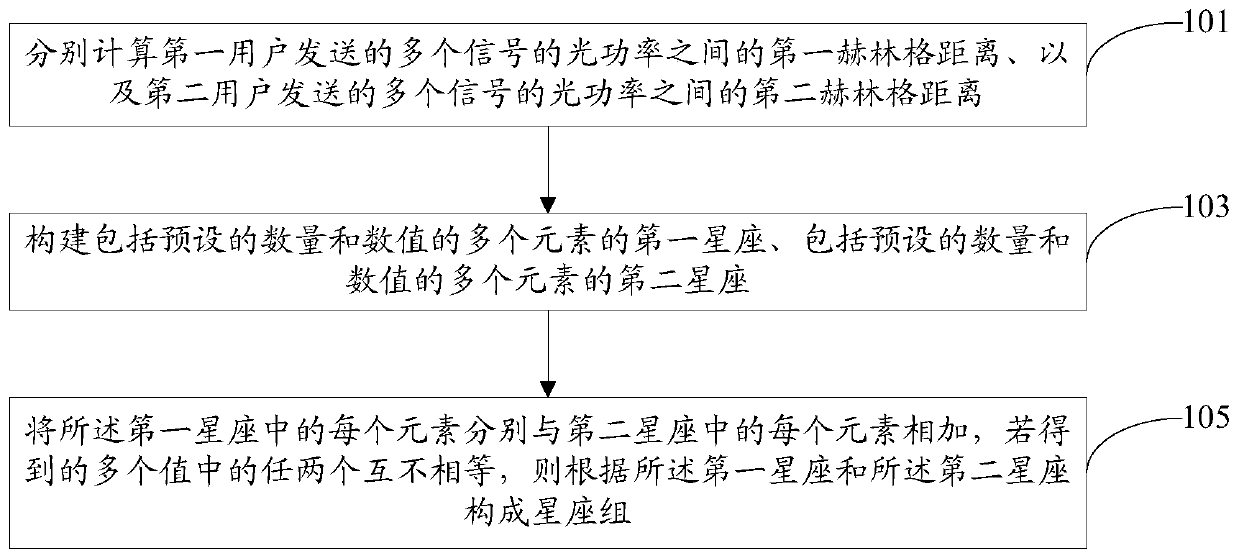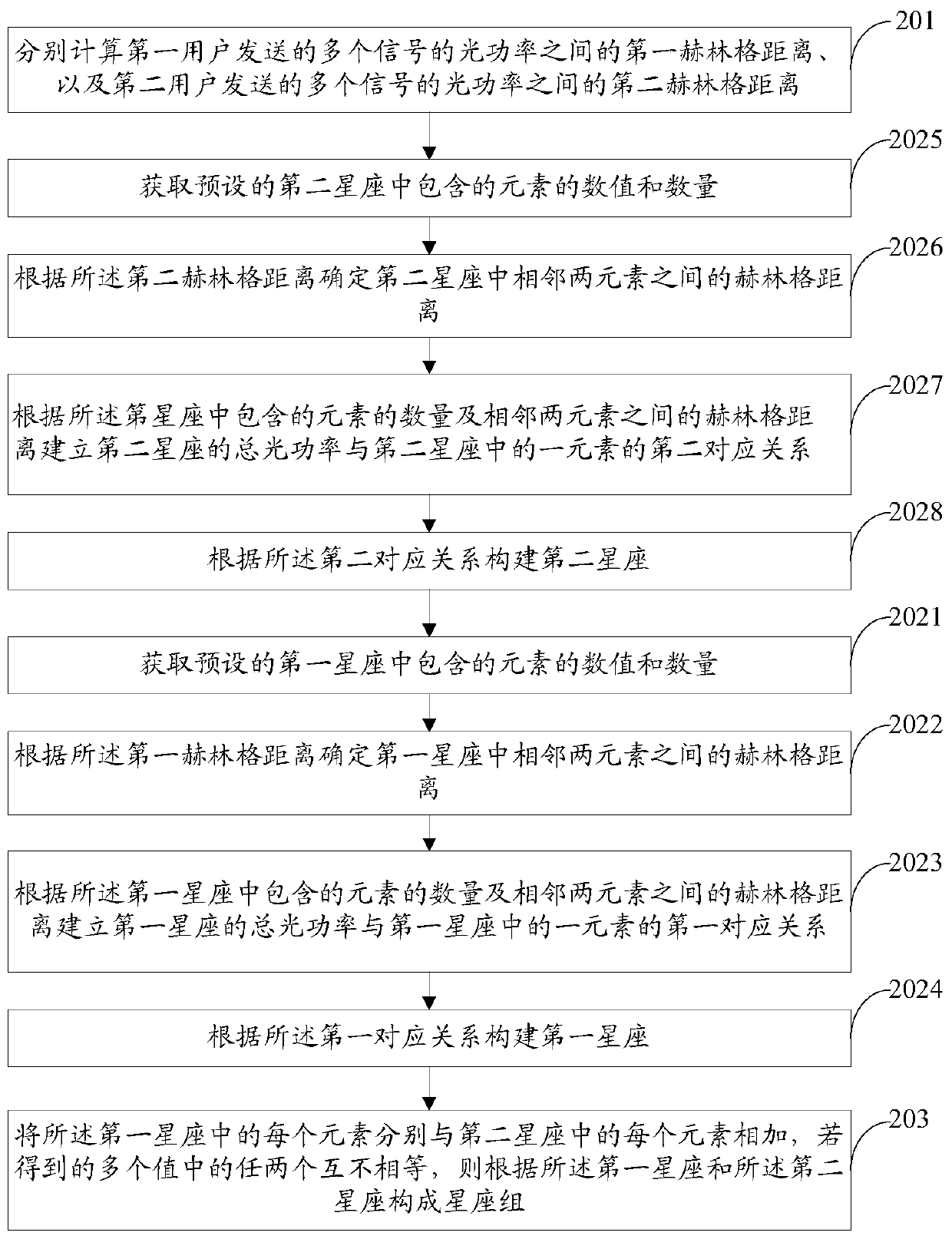A construction method and system for an additive uniquely decomposable constellation group
A construction method and constellation group technology, applied in the field of visible light communication, can solve the problem of signal confusion and analysis of the original signal, etc.
- Summary
- Abstract
- Description
- Claims
- Application Information
AI Technical Summary
Problems solved by technology
Method used
Image
Examples
Embodiment 1
[0072] The embodiment of the present invention discloses an additive uniquely decomposable constellation group, see figure 1 shown, including:
[0073] Step S101, respectively calculating a first Hellinger distance between optical powers of multiple signals sent by a first user and a second Hellinger distance between optical powers of multiple signals sent by a second user.
[0074] The first user can send a visible light signal through the first LED, and the second user can send a visible light signal through the second LED; as a solution, here, the energy of the visible light signal sent by the first user and the second user is represented by the size of the optical power .
[0075] The Hellinger distance is the distance between the square roots of the optical power values of the same or different optical signals sent by the first user; for example, the optical power of the same or different optical signals sent by the first user is 0 2 and 5 2 , then the Hellinger dist...
Embodiment 2
[0083] An embodiment of the present invention provides a method for constructing an additive uniquely decomposable constellation, see Figure 2a-2c The structure shown, specifically includes:
[0084] Step S201, respectively calculating a first Hellinger distance between optical powers of multiple signals sent by a first user and a second Hellinger distance between optical powers of multiple signals sent by a second user.
[0085] This part of the content has been described in detail in the above embodiments, and will not be repeated here.
[0086] In the embodiment of the present invention, calculating the first Hellinger distance between the optical powers of the multiple signals sent by the first user may include:
[0087] 1) Obtaining the optical power of each of the multiple signals sent by the first user;
[0088] 2) calculating the first Hellinger distance according to the optical power of each signal;
[0089] Calculating the second Hellinger distance between the op...
Embodiment 3
[0134] The embodiment of the present invention discloses a construction system for an additive uniquely decomposable constellation group, see Figure 5 As shown, it includes a calculation module 501 , a constellation construction module 503 and a constellation group construction module 505 . in:
[0135] Calculation module 501, configured to respectively calculate the first Hullinger distance between the optical powers of the multiple signals sent by the first user and the first Hullinger distance between the optical powers of the multiple signals sent by the second user ;
[0136] The first Hellinger distance between the optical powers of the multiple signals sent by the first user is the difference between the square roots of the two optical power values in the optical powers of the multiple signals sent by the first user; similarly, the first user The second Hellinger distance between two optical powers among the optical powers of the multiple signals sent by the second...
PUM
 Login to View More
Login to View More Abstract
Description
Claims
Application Information
 Login to View More
Login to View More - R&D
- Intellectual Property
- Life Sciences
- Materials
- Tech Scout
- Unparalleled Data Quality
- Higher Quality Content
- 60% Fewer Hallucinations
Browse by: Latest US Patents, China's latest patents, Technical Efficacy Thesaurus, Application Domain, Technology Topic, Popular Technical Reports.
© 2025 PatSnap. All rights reserved.Legal|Privacy policy|Modern Slavery Act Transparency Statement|Sitemap|About US| Contact US: help@patsnap.com



